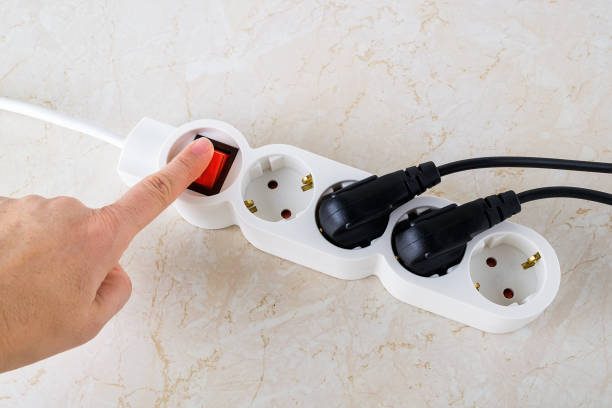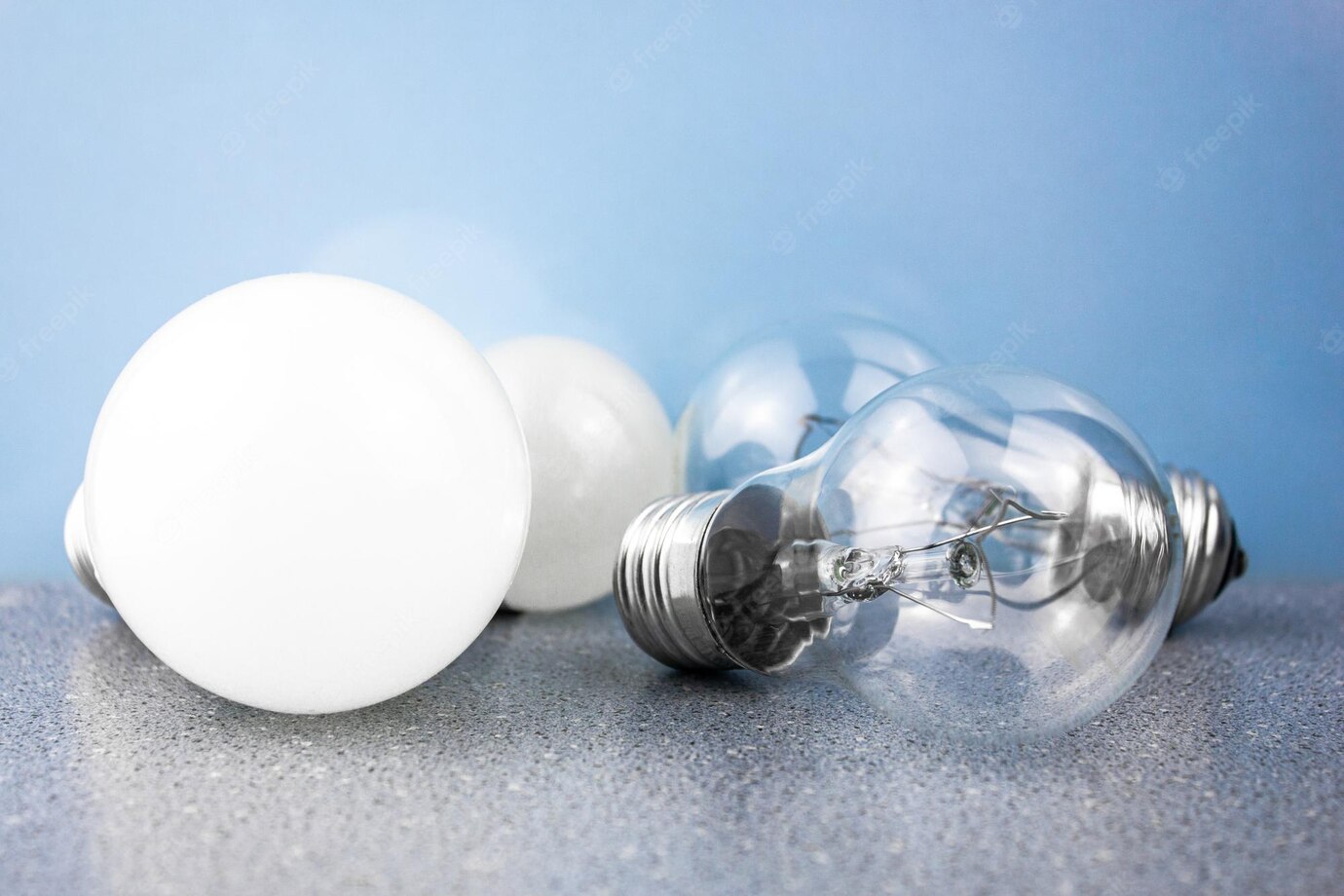
Explore common reasons why LED lights won’t turn on, from faulty wiring and incorrect installations to dead bulbs and power […]

If you are an Australian business or household that is considering lamp replacement, this article will be of great value to you.
Lighting is one of the key elements inside any space and within any setting, and whether for a house or an office, a great lighting solution can manipulate the height and depth of a space and can accentuate architectural details and key design elements.
This is why lighting has become an important element for people around the world who are keen to find practical, aesthetic and multipurpose lighting fixtures that can introduce several advantages for any kind of space.
LED Brilliance Starts Here, Just $33. Shine Brighter, Save More!
Our Team of Experts Will Guide You Through The ESS Lighting Upgrading Process To Ensure You Achieve The Most Effective Energy Efficient Improvement Possible, GUARANTEED!
A Brighter Home, A Brighter Future!
Lamps are easy to fix, set up and relocate when needed, making them very convenient solutions for task lighting (such as for reading). They can also accentuate or even change the interior feel of the house given the variety of available designs.
This article will motivate and guide you to make an informed decision of lamp replacement within your spaces.
A simple overview or web search of contemporary household and office designs will show you that the days of lighting a room with a single 60W lamp are long gone. Today, it is common to find eight or more spotlights in offices, living areas, bedrooms, and kitchens.
If each of these halogen spotlights consumes between 35W and 50W, your total lighting power consumption for that particular room could go up to 400W. This is likely to greatly increase with the different kinds of lamps and shades that illuminate different zones within the same space, noting that these decorative types are rarely energy efficient.
However, the power consumption for illuminating a room should not be high at all, and lamp replacement in Australia has become very convenient and cheap through the government program of NSW Energy Saving Scheme.
It is a government-sponsored program in Australia that assists organizations and individuals to lower their energy consumption and reduce their carbon emissions.
For businesses and homes in NSW, the NSW Energy Savings Scheme (ESS) provides financial incentives to encourage the installation of energy-efficient lighting.
More precisely, by paying a one-time fee of just $33, consumers get an infinite number of free non-dimmable replacement LEDs. Excellent quality dimmable LEDs are also available for significantly reduced prices.
This incredible scheme will allow Australians to benefit from significant reductions in their energy costs. Maintaining old halogen lights at high power consumption and with high energy bills is simply a bad financial and environmental decision,
Rebates and reduced electricity bills definitely sound intriguing, however, it is still important to learn about the various types of lamps within the residential and commercial spaces, and to understand what sets them apart.
Incandescent lamps are the standard bulbs that light up when electric current flows through their filament making it glow.
The main benefits of incandescent bulbs are that they are reasonably priced and are excellent for lighting tiny spaces. However, the energy transfer of these types of light is highly inefficient, whereby around 90% of the electrical energy consumed is lost in the form of heat.
Also, due to filament evaporation, the filament gets thinner, which reduces its luminous efficacy until it finally breaks. Even the glass bulb becomes darker over time due to filament evaporation.
Any lamp that contains a halogen gas surrounding its filament is called a halogen lamp.
A halogen bulb is essentially an incandescent lamp, but with the tungsten filament enclosed in a tiny, transparent envelope that is partially filled with inert gas and partially filled with a halogen, such as iodine or bromine.
The halogen gas and tungsten filament react to create a chemical process known as a halogen cycle that deposits evaporated tungsten back onto the filament, extending its lifespan and preserving the envelope’s clarity.
This results in light that is more luminously effective and warmer in color than incandescent.
Fluorescent lamps are low-pressure mercury-vapor lamps that emit visible light by fluorescence. Mercury vapor gas is excited by an electric current to produce short-wave ultraviolet light, which illuminates a phosphor coating inside the lamp.
Compared to an incandescent lamp, a fluorescent one is far more efficient at converting electrical energy into usable light.
The energy-saving option typically used in households is the compact fluorescent lighting (CFL), which is currently offered in the same widely used sizes as incandescent types.
A CFL is a type of fluorescent lamp manufactured to replace incandescent bulbs; these models are compatible with the holders of light fixtures made to accommodate incandescent bulbs. The lamps make use of a tiny electronic ballast within the lamp base and a tube that is folded or curled to fit into an incandescent bulb’s space.
Compared to an incandescent bulb, a CFL costs more to buy, but over the course of its lifespan, it can save more than five times that amount on electricity expenditures.
A gas-discharge lamp that produces light by using sodium in an excited state is known as a sodium-vapor lamp. These lamps are available in two different options: low pressure and high pressure.
The low-pressure options are extremely effective electrical light sources, but they only emit monochromatic yellow light, which interferes with nighttime color vision.
As such, their yellow light makes them useful only for outdoor illumination, such as street lamps, which is where they are most commonly found.
High-pressure sodium lamps, on the other hand, are a form of sodium lamp that is frequently used in outdoor public spaces as well as for industrial illumination. Public parking lots, streets, and other security zones frequently employ them, mainly because they are incredibly efficient.
In comparison to low-pressure lamps, high-pressure sodium lamps emit a wider range of light, however they render colors less accurately.
Manufacturing these lamps is also quite challenging since the presence of sodium vapor at a high level of pressure and temperature requires a special construction of corrosion-free material.
An LED lamp is an electric light that uses light-emitting diodes as its source.
Their operation is quite simple; visible light is produced when an electrical current flows through a microchip and ignites the small light sources known as LEDs. A heat sink absorbs the heat that LEDs generate, in order to prevent performance difficulties.
Currently, LEDs are the most energy-efficient and quickly evolving lighting technology. High-quality LED lamps outperform other types of lighting in terms of lifespan, durability, and illumination levels.
When compared to similar incandescent lamps, LED lamps are much more energy-efficient, and they can besignificantly more efficient than the majority of fluorescent lamps too.
Lamp replacement is a hot topic among Australians , and for all the good reasons. The Australian government has clearly recognized the potential role of LED lamps in the maximization of energy efficiency.
Below are some of the reasons why LED lamps are not only a rapidly developing technology but are also very well-received by consumers:
If you only have a single lamp to replace and wish to carry out the retrofit yourself, below are some very basic steps you need to follow:
If you have a larger retrofit project, or simply prefer having a professional implementing the replacements, you can get in contact with industry experts like E-Green Electrical.
E-Green Electrical’s expert residential and commercial LED upgrade team can ensure that your lights look attractive and are fully functional. Employing a certified professional to complete the installation, can ensure against potential errors and hazards.
An energy specialist from E-Green Electrical will help you through the entire installation process, covering the retrofit work, the paperwork and even the rebates claim.
The financial incentives offered under the NSW Energy Savings Scheme allow E-Green Electrical to apply for the subsidies on your behalf, ensuring an LED lighting upgrade for a fraction of the original cost.
Consumers primarily pick LED light bulbs based on their long lifespan, their ability to produce high-quality light, the low power consumption, and most importantly, since they are more economical in the long run.
When comparing LED lamps from different companies to make a selection, make sure you pay attention to the two features below:
Manufacturers make a wide range of inconsistent and sometimes deceptive statements concerning the efficacy of LED light bulbs. To compare “like with like,” the simplest approach is by studying the efficacy in Lumens per Watt. In other words, how much light is produced for every Watt of energy used?
Warm white (2700 or 3000K) to daylight (6000K and above) color temperatures are all available in LED lamps.
However, LED light bulbs with higher color temperatures typically perform a little better than those with lower ones. Therefore, some businesses sell these to make their products appear brighter.
The ideal color temperature range for replacing regular incandescent or halogen lamps s 2700K to 3300K.
When defining the color of LED light bulbs, some manufacturers employ non-standard phrases like “natural white” or “office white” which make it difficult to compare them to other products. Always verify the color temperature to make sure you are comparing identifiable values.
Upgrade Your Halogen Downlights To Energy Efficient LED Downlights Under The NSW Energy Savings Scheme And Slash Your Energy Bills Today! Complete LED Lighting Upgrade From As Little As $33.
Upgrade Your Home for $33 and Up!. Don’t Wait Act Now!
Residential and commercial lamp replacements in the favor of LEDs are not mandatory in Australia, however they are highly encouraged.
To encourage citizens to upgrade their lighting systems and to maximize energy conservation in the country, the government has devised this amazing energy-saving scheme as well, which offers several kinds of rebates to households and businesses on their upgrade to LED lighting.
You can indeed save a lot of money by switching to energy-efficient LED lights from traditional halogen or CFL tubes. However, the precise savings and advantages you receive from this upgrade will depend on several variables.
Will there be any hidden costs in availing of the Australian government’s energy-saving scheme?
As long as you are eligible for the upgrade, there won’t be any hidden fees. The only additional charges you might incur will come from services not included in the program. This will be thoroughly explained prior to the commencement of retrofit works, so that you are fully aware of all associated costs.